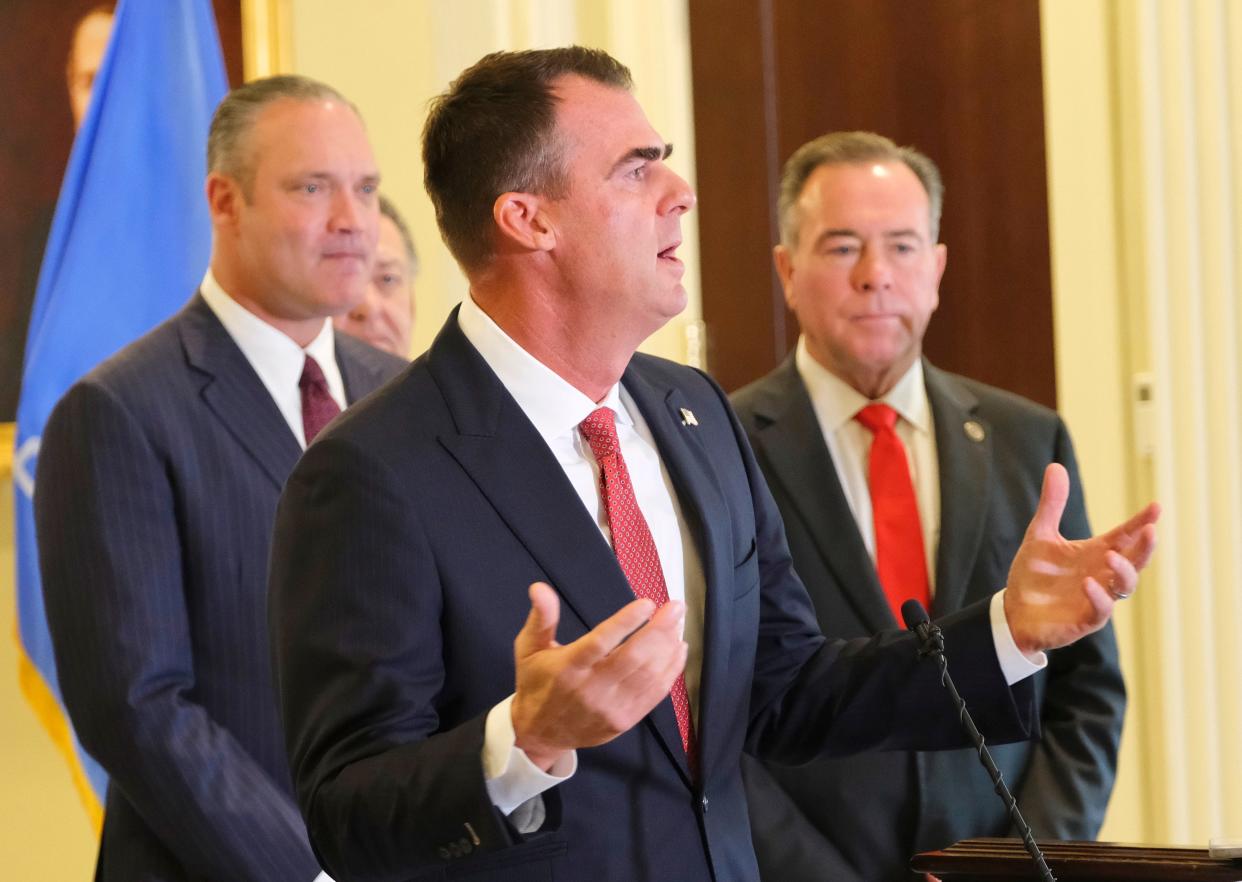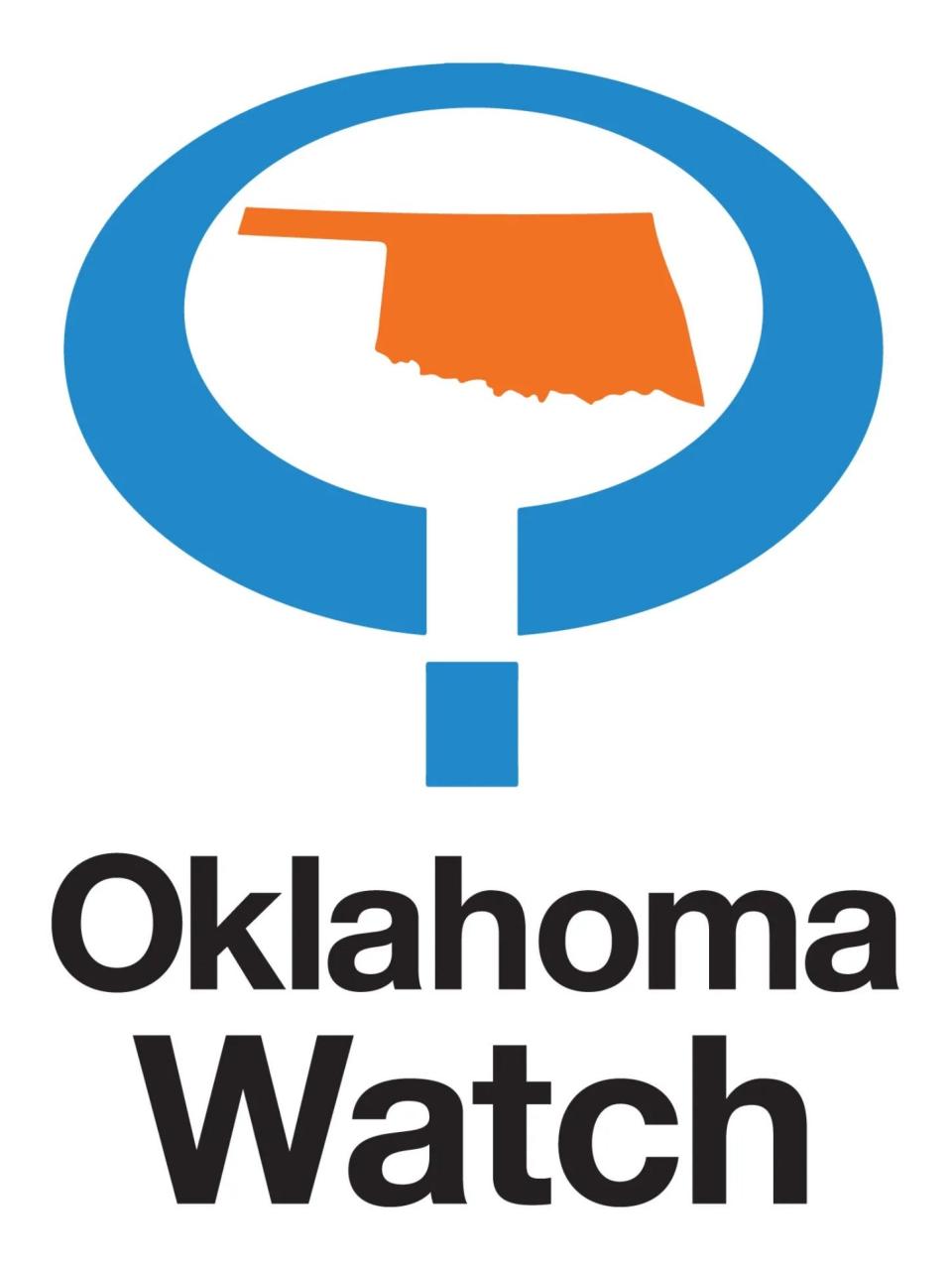Nearly $18 million in COVID relief funding going to Oklahoma classroom supplies, education

- Oops!Something went wrong.Please try again later.
The governor distributed all of his remaining federal COVID-19 relief dollars for education, just under $18 million, prior to a Sept. 30 deadline.
Six projects were funded with Gov. Kevin Stitt’s second round of the Governor’s Emergency Education Relief Fund, or GEER. The largest of those dedicated $11 million to purchase classroom supplies for thousands of Oklahoma teachers through DonorsChoose, an online platform where teachers post needs and donors select projects to donate to.
Stitt received $17.7 million from GEER 2, passed by Congress at the end of December 2020 in response to the coronavirus pandemic. Stitt’s office delayed dispersing the money to shore up oversight and federal grants management after auditors found millions of dollars misspent in programs funded with his initial $40 million GEER allocation.

In that first round, $8 million went to the Bridge the Gap Digital Wallet program, which distributed $1,500 grants to low-income families to buy school supplies and was the subject of a joint investigation by Oklahoma Watch and The Frontier. A state audit found participants spent $1.7 million on items that were not educational and a federal audit found the state failed to oversee the funds. The attorney general is investigating whether state officials should be held legally liable.
State auditors also found problems with the $10 million Stay in School program, intended to help families affected by the pandemic continue to send their children to private school. According to that audit, released in June, $6.5 million didn’t align with the program’s purpose.
More: Attorney general to investigate auditor's accusations about pandemic relief funds for renters
None of the GEER 2 funding went to the Oklahoma State Department of Education led by Superintendent Ryan Walters, who oversaw the Digital Wallet program as head of the nonprofit Every Kid Counts Oklahoma.
This time, the Oklahoma Office of Management and Enterprise Services is managing the grants, and they’ve hired a consultant to assist with oversight and administration of the funds.
The governor’s staff solicited proposals for the $17.7 million at the end of 2021. Ultimately, all of the funded projects were pulled from those ideas. The recipients have to spend down the entire amount by Jan. 31.
How will the COVID relief money be spent in Oklahoma?
Here is a breakdown of the projects, according to the state Office of Management and Enterprise Services:
$11.6 million for teacher classroom supplies through DonorsChoose. Between Aug. 9-19, the state fulfilled more than 12,000 requested projects of up to $1,000 each, according to DonorsChoose.
$1.9 million to Boys & Girls Clubs of Oklahoma County, focusing on the Capitol Hill neighborhood and south Oklahoma City, to pay for building improvements, supplies and staff salaries for programs such as tutoring, STEM activities, sports and arts.
$200,000 to Boys & Girls Clubs of Oklahoma County to operate mobile clubhouses.
$2.5 million for The Children’s Center, a private children’s hospital in Bethany, to provide health and wellness resources to elementary schools across the state.
$600,000 to Special Care, a nonprofit organization providing early childhood education, specialized care and therapeutic services to children with and without disabilities, for teacher and support staff salaries and retention bonuses.
$400,000 for a statewide, one-year subscription to Learning Blade, an online platform to promote middle school students’ awareness of STEM and computer science jobs and career and technical education. Learning Blade started working with Oklahoma schools this spring and about 70 schools have signed up so far, founder Sheila Boyington said. Access is available to any organization working with students.
$250,000 for a consultant, Guidehouse, to help the state oversee and administer the funds.
$272,950 is earmarked for other administrative costs.
The leader of one organization said the delay in receiving those funds doesn’t mean it’s too late.
“There is such an overwhelming need to help kids catch up,” said Teena Belcik, president and chief executive officer of Boys & Girls Clubs of Oklahoma County. “I’m tired of COVID, thinking about it, talking about it. We all want it to be in our rearview mirror. The problem is, if you walk into any school or any Boys & Girls Club, you are going to see lingering repercussions of what kids have been through.”
Some of these organizations previously received COVID-19 relief funding from other agencies.
The state Education Department twice in 2022 allocated federal COVID-19 relief money to fulfill DonorsChoose projects — $6 million in March 2022 and an additional $6 million in October 2022.
The Legislature awarded the Oklahoma Alliance of Boys & Girls Clubs of Oklahoma, which has 17 organizations and 95 locations, $30.1 million in American Rescue Plan funds to increase the capacity of its programs serving at-risk youth. The organization also received money from the state Education Department to expand summer programs in 2021.
Special Care also received ARPA funds: $2.5 million to expand and add six classrooms and a therapy classroom. The expansion is expected to allow the organization to serve 120 additional children and their families, a 50% increase.
Bethany’s The Children’s Center received $2 million under ARPA to renovate 100 existing beds and buy medical equipment.
Oklahoma Watch, at oklahomawatch.org, is a nonprofit, nonpartisan news organization that covers public-policy issues facing the state.
This article originally appeared on Oklahoman: Second round of COVID relief funds sent to Oklahoma education programs

